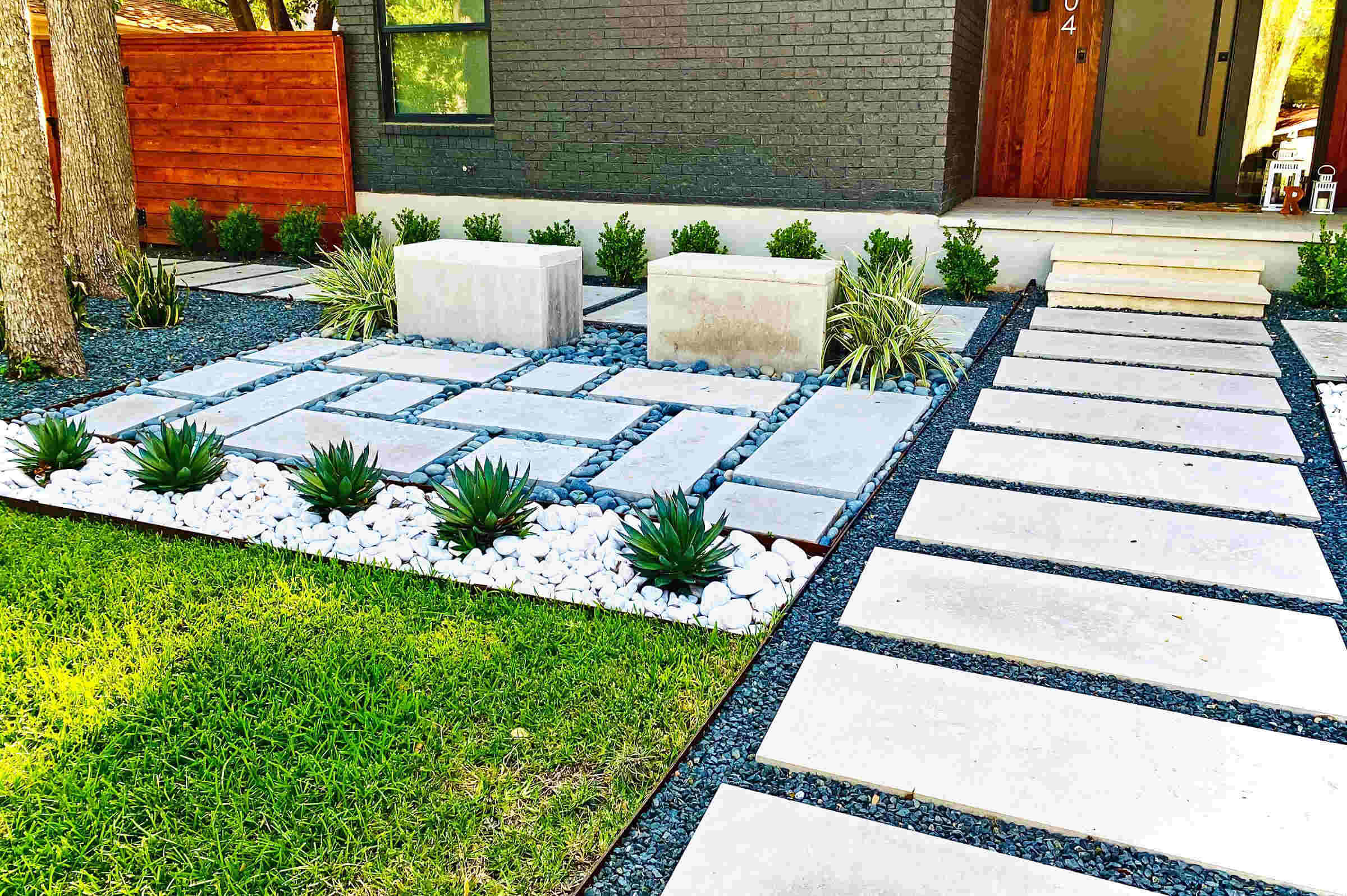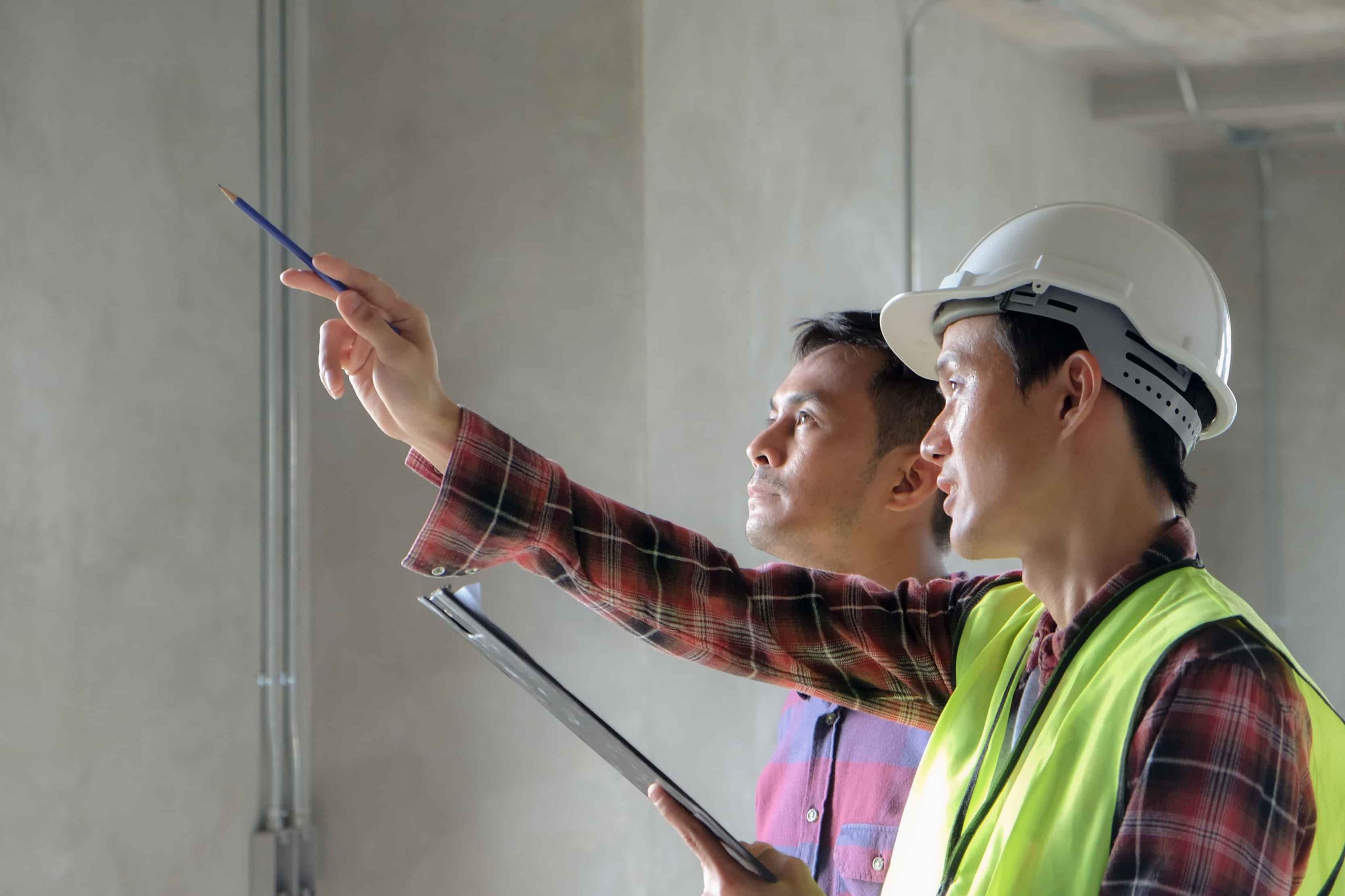Home>diy>Building & Construction>How To Write A Proposal For A Construction Project


Building & Construction
How To Write A Proposal For A Construction Project
Modified: December 7, 2023
Learn the essential steps to write a winning proposal for a building construction project. Increase your chances of success with expert tips and guidance.
(Many of the links in this article redirect to a specific reviewed product. Your purchase of these products through affiliate links helps to generate commission for Storables.com, at no extra cost. Learn more)
Introduction
Welcome to the world of construction projects! Whether you are a seasoned contractor or a novice project manager, writing a proposal for a construction project is an essential skill to master. A well-crafted proposal not only showcases your expertise and capabilities but also convinces potential clients to choose you as their preferred contractor.
In this article, we will guide you through the process of writing a winning proposal for a construction project. From understanding the project objectives to outlining the methodology and evaluating project risks, we will cover all the essential elements necessary to create a compelling proposal that stands out from the competition.
Before we delve into the details, it’s important to note that every construction project is unique. The requirements and specifications may vary, and it’s crucial to tailor your proposal accordingly. However, there are certain key components that should be included in every construction project proposal, and we will outline them for you.
So, whether you’re bidding for a residential building construction, a commercial renovation, or an infrastructure development project, this guide will provide you with the framework and insights to create a persuasive proposal that secures the project.
Now, let’s dive into the specifics and discover the art of crafting a compelling proposal for a construction project.
Key Takeaways:
- Master the art of crafting a winning construction project proposal by understanding project objectives, outlining deliverables, and addressing risks to showcase expertise and inspire client confidence.
- Tailor each proposal to fit unique project needs, demonstrating technical expertise, effective communication, and commitment to delivering successful construction projects.
Read more: How To Write On Glass
Overview of the Construction Project
Before you begin writing your proposal, it’s crucial to understand and articulate the key details of the construction project. This section provides a high-level overview of the project, giving the reader a clear understanding of its purpose and scope.
Start by providing a brief description of the project. This should include the type of construction project (e.g., residential, commercial, industrial) and any unique features or requirements that set it apart from others. Highlight the project’s objectives and the problem it aims to solve, emphasizing the value it will bring to the client.
Next, outline the project’s scope. This includes the specific tasks and activities that will be undertaken during the construction process. Be as detailed as possible, but avoid overwhelming the reader with excessive technical jargon. Break down the project into manageable components, such as site preparation, structural work, electrical and plumbing installations, finishing touches, and any other relevant stages.
Another crucial aspect to address is the project’s location. Provide the project’s address or geographical coordinates and mention any challenges or advantages associated with the site. This helps the reader visualize the project and understand its contextual relevance.
Additionally, highlight any legal or regulatory requirements that need to be considered throughout the construction process. This may include permits, environmental regulations, safety standards, and any other compliance measures.
Finally, conclude the overview section by briefly discussing the expected outcome or deliverable of the project. What will the completed construction look like? Will it be a state-of-the-art office building, a sustainable residential complex, or a modern infrastructure facility? Paint a vivid picture of the end result to create excitement and showcase your vision for the project.
By providing a comprehensive and concise overview of the construction project, you set the stage for the rest of your proposal. It helps the client understand the project’s purpose, scope, and potential impact while demonstrating your understanding of their needs and requirements.
Project Objectives and Scope
Clearly defining the project objectives and scope is crucial in any construction project proposal. This section allows you to align your approach with the client’s expectations and ensure a common understanding of the project’s goals.
Begin by outlining the main objectives of the project. These objectives should be specific, measurable, achievable, relevant, and time-bound (SMART). For example, some common project objectives in construction may include completing the project within a given timeframe, adhering to quality standards, maximizing cost-efficiency, and ensuring client satisfaction.
Next, provide a detailed description of the project’s scope. This includes not only the physical aspects of the construction but also any associated tasks and responsibilities. Consider including the following elements:
- Site preparation and excavation
- Foundation and structural work
- Interior and exterior finishes
- Plumbing, electrical, and HVAC installations
- Landscaping and exterior amenities
- Permitting and regulatory compliance
- Quality control and safety measures
Clearly defining the scope helps both you and the client have a shared understanding of what will be included in the project. It prevents misunderstandings and enables better planning and resource allocation.
Additionally, identify any limitations or exclusions that are not within the scope of the project. This could include tasks such as furniture installation, relocation services, or ongoing maintenance, which may not be part of the initial construction phase.
It’s also important to mention any dependencies or requirements from the client’s side. This could include providing access to the site, timely decision-making on design changes, or coordination with other stakeholders involved in the project.
Ultimately, by clearly outlining the project objectives and scope, you set clear expectations with the client and establish a foundation for a successful construction project. This section demonstrates your ability to understand and deliver on the client’s needs while providing a roadmap for the rest of your proposal.
Project Deliverables
In any construction project proposal, it is important to clearly define the deliverables – the tangible or intangible outcomes that will be provided to the client upon the project’s completion. This section demonstrates your ability to meet the client’s requirements and deliver a successful project.
Begin by identifying the primary deliverables, which may include:
- The completed construction project
- As-built drawings and documentation
- Testing and commissioning reports
- Handover of keys and relevant permits
- Training and manuals, if applicable
- Warranty and maintenance agreements
For each deliverable, provide a detailed description of what it entails and how it aligns with the client’s needs. For example, for the completed construction project, explain the specific requirements and specifications that will be met, such as architectural design, structural integrity, and adherence to relevant codes and standards.
It is also important to outline any additional value-added services that will be provided. This could include post-construction support, such as assistance with obtaining occupancy certificates or ongoing maintenance and repairs.
Additionally, discuss any milestones or interim deliverables that will be provided throughout the course of the project. This can help reassure the client that progress will be monitored and timely updates will be provided.
Furthermore, include any contingency plans or alternative deliverables in case unforeseen circumstances arise. This demonstrates your flexibility and commitment to ensuring successful project completion, even in challenging situations.
By clearly defining the project deliverables, you showcase your ability to meet the client’s expectations and deliver a final product that aligns with their needs and requirements. This section demonstrates your professionalism and sets the stage for a successful collaboration.
Project Timeline and Schedule
A well-planned and organized construction project requires a clear timeline and schedule. This section of your proposal outlines the key milestones and establishes a realistic timeframe for the completion of the project.
Begin by presenting a high-level overview of the project timeline. This can be done using a Gantt chart or a simple table that highlights the major phases and their estimated durations. It is crucial to discuss the timeline with the client and ensure that it aligns with their expectations and any specific deadlines they may have.
Break down the project into manageable phases or stages, such as site preparation, foundation construction, structural work, mechanical and electrical installations, finishes, and final inspections. Specify the start and end dates for each phase, as well as any dependencies or sequential tasks that must be completed before the next phase can begin.
Include any important milestones in your timeline, such as project kick-off, client meetings, inspections, and delivery of key materials or equipment. These milestones serve as progress markers and allow for effective project monitoring and communication.
Demonstrate your understanding of the construction process by accounting for factors that may impact the timeline, such as inclement weather, potential delays in material procurement, or unexpected site conditions. It’s important to allocate sufficient time for these potential challenges and provide a realistic schedule that factors in contingencies.
When presenting the project schedule, make sure to include critical dates, such as the expected project start date and the proposed project completion date. This gives the client a clear understanding of the overall project duration and allows them to plan accordingly.
Consider including a brief explanation of the construction sequencing and the rationale behind it. This helps the client visualize how the project will progress and understand the logical sequence of activities.
By providing a comprehensive and realistic project timeline and schedule, you demonstrate your ability to plan and manage construction projects efficiently. This section reassures the client that their project will be completed within the agreed-upon timeframe, fostering trust and confidence in your capabilities.
Read more: How To Write A Television Pilot
Required Resources
A successful construction project relies on the availability of the necessary resources. This section of your proposal outlines the key resources required to execute the project, including personnel, materials, equipment, and technology.
Start by identifying the project team and their roles and responsibilities. This may include project managers, architects, engineers, construction workers, subcontractors, and other specialists. Emphasize the qualifications and experience of your team members, highlighting their expertise in similar projects. This demonstrates your ability to assemble a skilled and reliable workforce.
Next, discuss the materials and supplies needed for the project. Specify the types and quantities of construction materials, such as concrete, steel, lumber, or specialized finishes. Mention any specific requirements or quality standards that must be met, as well as any environmentally-friendly or sustainable options that will be utilized.
Address the equipment and machinery needed for the construction process. This may include excavators, cranes, concrete mixers, scaffolding, and power tools. Describe the availability of these resources, whether they will be purchased, rented, or already owned by your company. Highlight the maintenance and safety measures in place to ensure their efficient and safe operation.
In addition to physical resources, mention any specialized technology or software that will be utilized during the project. This could include Building Information Modeling (BIM) software, project management tools, or scheduling software. Explain how these tools will enhance project efficiency and collaboration.
Consider any additional resources required, such as permits and licenses, insurance coverage, and access to utilities and services at the construction site. Address how you will acquire these resources and ensure compliance with relevant regulations and policies.
Finally, discuss your approach to resource management throughout the project. Highlight your ability to coordinate and allocate resources effectively, ensuring that they are utilized optimally and that potential shortages or conflicts are proactively addressed.
By detailing the required resources for the construction project, you demonstrate your preparedness and ability to execute the project successfully. This section highlights your access to skilled personnel, reliable materials, and efficient equipment, setting you apart from competitors and instilling confidence in the client.
Clearly outline the scope, timeline, and budget of the project. Include detailed plans, materials, and labor costs to provide a comprehensive proposal.
Project Budget
The project budget is a crucial aspect of any construction project proposal. This section outlines the estimated costs associated with the project and provides transparency to the client regarding the financial aspects of the project. It demonstrates your ability to manage costs effectively and ensures that the client understands the investment required.
Start by breaking down the budget into categories, such as labor, materials, equipment, subcontractors, permits and licenses, and any other relevant expenses. Provide a detailed description of each category and explain how the costs are determined.
When estimating labor costs, consider factors such as the number of workers, their hourly rates, and the duration of the project. Break down the labor costs based on different job roles or tasks, if applicable, to provide a granular view of the expenses.
For materials, discuss the estimated quantities, unit costs, and the sources from which they will be procured. Specify any premium or specialized materials that may impact the overall budget.
Include equipment costs, whether it’s the purchase, rental, or leasing of necessary machinery. Explain how the costs are calculated, including any maintenance or operational expenses associated with the equipment.
If subcontractors are involved in the project, provide details about their scope of work, estimated costs, and the terms of the subcontracting agreements.
Consider additional expenses that are necessary for the project’s completion, such as permits and licenses, insurance coverage, safety measures, and any contingency or unforeseen expenses. Discuss how these costs are factored into the overall budget.
Furthermore, present the payment schedule for the project. This outlines when and how payments will be disbursed throughout the project, including any upfront deposits, milestone-based payments, and final balance payments.
It is important to mention that the budget presented is an estimate and subject to change based on unforeseen circumstances, changes in scope, or market fluctuations. Emphasize your commitment to regularly communicate and update the client on any budget adjustments throughout the project.
By providing a detailed and transparent project budget, you demonstrate your financial acumen and ability to manage costs effectively. This section establishes trust with the client and allows them to make well-informed decisions regarding the project’s financial investment.
Proposed Methodology
The proposed methodology section of your construction project proposal details your approach to executing the project. It outlines the specific processes, methodologies, and best practices that will be employed to ensure a successful and efficient construction process.
Start by discussing the initial planning phase. Explain how you will collaborate with the client to understand their requirements, objectives, and preferences. Discuss your approach to conducting site assessments, feasibility studies, and any necessary architectural and engineering studies. Emphasize your commitment to effective communication and collaboration during the planning phase.
Next, outline the project management strategies that will be employed throughout the construction process. Discuss how you will monitor and control various aspects of the project, such as scheduling, budgeting, quality assurance, and risk management. Highlight any project management software or tools that will be utilized to facilitate efficient communication and ensure transparency.
Describe your approach to managing subcontractors, if applicable. Explain how you will select and coordinate subcontractors, ensuring that they are qualified, reliable, and aligned with the project’s goals and objectives. Emphasize your commitment to maintaining effective communication and fostering strong relationships with subcontractors.
Discuss your construction methodology and techniques. Explain the specific construction methods that will be employed, addressing the unique requirements of the project. Highlight any innovative techniques or sustainable practices that will be incorporated, showcasing your commitment to environmental responsibility and quality construction.
Explain your approach to safety management. Discuss the safety protocols and regulations that will be followed on-site, ensuring the well-being of the construction team, subcontractors, and any other individuals involved in the project. Emphasize your dedication to creating a safe work environment and minimizing accidents and hazards.
Address any quality control measures that will be implemented throughout the construction process. Discuss your approach to inspections, testing, and quality assurance, ensuring that the final project meets and exceeds industry standards and the client’s expectations.
Finally, discuss your approach to project documentation and reporting. Explain how progress will be documented, including regular progress reports, photographic evidence, and as-built drawings. Discuss how you will provide updates to the client and keep them informed about the project’s progress.
By outlining your proposed methodology, you demonstrate your expertise and professionalism in executing construction projects. This section showcases your ability to efficiently plan, manage, and execute the project, ensuring a successful outcome and client satisfaction.
Project Risks and Mitigation Measures
Every construction project involves inherent risks that can potentially impact its success. This section of your proposal addresses the potential risks associated with the project and outlines the mitigation measures that will be implemented to minimize or eliminate these risks.
Start by identifying the key risks that may arise during the project lifecycle. This can include risks related to scope changes, weather conditions, materials availability, labor shortages, regulatory compliance, and unforeseen site conditions. It’s important to be thorough in identifying potential risks to demonstrate your proactive approach.
For each identified risk, discuss the potential impact it may have on the project timeline, budget, and quality, as well as any safety concerns. Explain how these risks have been assessed and quantified, using industry-standard risk analysis techniques if relevant.
Next, outline the mitigation measures that will be implemented to address each identified risk. These measures should be specific, actionable, and realistic. Consider including the following elements:
- Contingency plans: Describe the alternative approaches or solutions that will be enacted if the identified risk becomes a reality.
- Regular communication: Emphasize the importance of ongoing communication with the client, subcontractors, and stakeholders to address and mitigate risks in real-time.
- Monitoring and reporting: Detail the procedures for monitoring and reporting on project progress, allowing for early identification and mitigation of potential risks.
- Proactive problem-solving: Discuss your commitment to resolving potential issues swiftly and efficiently, minimizing any impact on the project.
- Insurance coverage: Mention any insurance policies in place to protect against unforeseen risks and ensure financial security for all parties involved.
Additionally, discuss your approach to safety management as a risk mitigation measure. Outline the safety protocols that will be followed to minimize accidents, injuries, and potential delays. Emphasize your dedication to creating a safe working environment for all individuals involved in the project.
By addressing project risks and outlining mitigation measures, you demonstrate your ability to anticipate challenges and proactively address them. This section highlights your commitment to a smooth and successful construction process, reassuring the client that their project remains in capable hands.
Read more: How To Write A Bid For Landscaping
Project Evaluation and Success Criteria
Evaluating the success of a construction project is crucial to determine if it met the desired objectives and fulfilled the client’s expectations. This section of your proposal outlines the criteria that will be used to evaluate the project’s success and measure its overall performance.
Start by discussing the key performance indicators (KPIs) that will be used to assess the project’s success. These can include metrics such as adherence to the project timeline, budget compliance, quality standards achieved, client satisfaction, and any other factors that are important to the client or the project’s goals.
For each identified KPI, provide specific and measurable targets or benchmarks. This could include completing the project within a certain timeframe, achieving a specific level of cost savings, meeting established quality standards, or obtaining high client satisfaction ratings.
Discuss the methods that will be used to measure and evaluate the project’s performance against these criteria. This can include regular progress assessments, site inspections, documentation reviews, feedback from the client and stakeholders, and any other relevant evaluation methods specific to your industry or project type.
Outline the reporting mechanisms that will be implemented to communicate project progress and evaluate success. This can involve regular progress reports that highlight accomplishments, identify challenges, and provide recommendations for improvement. It can also include milestone meetings or presentations to share updates with the client and key stakeholders.
Furthermore, discuss your approach to conducting a post-project evaluation or lessons learned session. Explain how you will collect feedback from the client, subcontractors, and project team members to identify areas of improvement and incorporate them into future projects. Emphasize your commitment to continuous improvement and utilizing lessons learned to enhance project delivery.
By establishing clear evaluation criteria and methods, you demonstrate your commitment to delivering a successful construction project. This section showcases your ability to measure performance and ensure that the project aligns with the client’s goals and expectations.
Conclusion
In conclusion, writing a comprehensive and well-structured proposal for a construction project is essential for showcasing your expertise, winning clients, and ultimately delivering a successful project. Throughout this article, we have provided a step-by-step guide on how to create a compelling and informative proposal that captures the client’s attention and sets you apart from the competition.
We started by emphasizing the importance of understanding the project objectives and scope, as well as highlighting the project’s deliverables, timeline, and required resources. These sections lay the foundation for a clear and concise proposal that aligns with the client’s needs and expectations.
We then discussed the proposed methodology, which outlines your approach to project execution, management, and quality assurance. This section demonstrates your expertise and sets the stage for a successful construction process.
We recognized the importance of addressing potential risks and outlining mitigation measures to minimize their impact on the project. By identifying and proactively managing risks, you showcase your ability to navigate challenges and maintain project success.
Additionally, we discussed the significance of evaluating the project’s performance and establishing success criteria. By clearly defining how success will be measured and evaluated, you emphasize your commitment to delivering a high-quality project that meets the client’s expectations.
In conclusion, a well-crafted construction project proposal combines technical expertise, effective communication, and a deep understanding of client requirements. By following the guidelines outlined in this article, you will be equipped to create a compelling proposal that not only demonstrates your capabilities but also inspires confidence and trust in your ability to deliver a successful construction project.
Remember, each proposal should be customized to fit the unique needs of the specific project. Put your creativity, industry knowledge, and attention to detail to work, and produce a proposal that truly showcases your expertise as a construction professional.
Now, armed with this knowledge, go ahead and confidently write your construction project proposal, and may it pave the way for the successful completion of many exciting projects to come.
Frequently Asked Questions about How To Write A Proposal For A Construction Project
Was this page helpful?
At Storables.com, we guarantee accurate and reliable information. Our content, validated by Expert Board Contributors, is crafted following stringent Editorial Policies. We're committed to providing you with well-researched, expert-backed insights for all your informational needs.














0 thoughts on “How To Write A Proposal For A Construction Project”